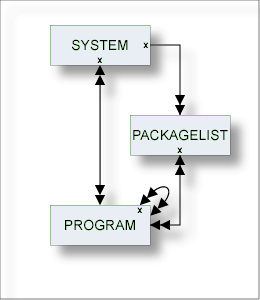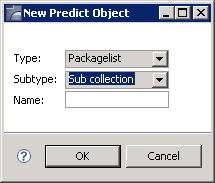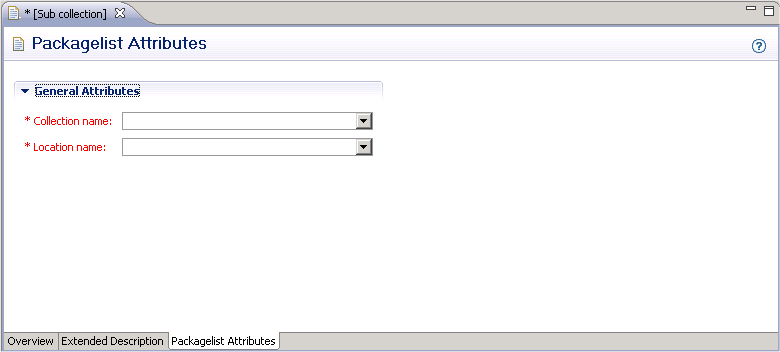The Predict object type Packagelist is used to document DB2 packages.

Note:
Packagelists of type T and packagelists of type S are related using
the parameters Collection name and Location name.
This document covers the following topics:
For general information on how to manage objects (for example, how to add or copy an object), see the Predict Object Description documentation.
The table below contains a list of all valid packagelist types.
| Code | Packagelist Type |
|---|---|
| Q | Database request module (DBRM). Packagelists of type Q contain one DBRM which is directly bound to the plan. |
| S | Subcollection. Packagelists of type T and packagelists of type S are connected using the parameters Collection name and Location name. Each package in a packagelist of type S is also contained in a packagelist of type T. |
| T | Total collection. Packagelists of type T provide an overview of all packages used in a collection. The parameters Collection name and Location name are mandatory for packagelists of type T. |
When you add a packagelist, you first have to specify the packagelist type in the New Predict Object dialog box.

When you choose the button, a packagelist type-specific window appears. The packagelist type is indicated in the title bar.
Predict ensures the consistency of related packagelists (types T and S):
If a package is purged from a packagelist of type T, it is purged automatically from corresponding packagelists of type S.
If a package is added to a packagelist of type S, it is added automatically to the corresponding packagelist of type T.
The Packagelist Attributes tab is shown for packagelists of type T and S. For Packagelists of type Q only the tabs for the global attributes are provided. Parameters not listed here are described under Global Attributes.

| Parameters | |
|---|---|
| Collection name | From version 2.3 of DB2 and above, packages are always referenced via collections. A collection is a virtual summary of packages, used to simplify references to packages. In Predict, collections are documented as attributes of packagelists. Packagelists are grouped by including several packages to the same collection. A collection is documented in Predict with the attributes collection name and location name. A collection name can be up to 18 characters long. |
| Location name | Together with collection names, location names identify collections uniquely. A location name can be up to 16 characters long. |
Predict objects of type Packagelist are purged with the command.
The following rules apply:
The following objects are deleted:
the packagelist object
all links to child objects
all links from parent objects
With packagelists of type T, all packagelists of type S connected to the packagelist via the attributes Collection/Location name are deleted as well.